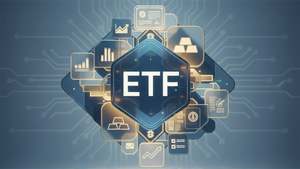
October 15, 2025 – Chainlink (LINK), a foundational decentralized oracle network crucial for the broader Web3 ecosystem, is currently navigating a period of heightened volatility, facing a credible risk of a 15% price decline. As of October 15, 2025, LINK has seen significant downward pressure, including a 4% drop on October 10 and a 10% loss since October 13, pushing its price into the $18.33-$18.42 range. This immediate market reaction is largely driven by a confluence of bearish technical indicators and a challenging global macroeconomic landscape.
The potential for further depreciation in LINK’s value sends ripples across the cryptocurrency market, given Chainlink’s integral role in providing real-world data to smart contracts. Its performance is often seen as a bellwether for the health of the decentralized finance (DeFi) sector and the broader adoption of blockchain technology. The current downturn underscores the persistent sensitivity of digital assets to external economic forces and shifts in investor confidence, prompting a cautious outlook for many participants in the crypto space.
Market Impact and Price Action
Chainlink’s price action leading up to and including October 15, 2025, paints a clear picture of bearish dominance. The token has experienced a significant decline of over 22% in the month preceding October, with recent trading pushing it below critical support levels. On October 10, LINK tumbled 4% to $21.30, threatening the crucial $21.86 support, and has since continued its descent, losing another 10% since October 13 to trade around $18.33-$18.42. This movement has been accompanied by a spike in volatility, reaching 5% around this period.
Technical indicators reinforce this bearish sentiment. Both the 50-day and 200-day moving averages are reportedly falling, signaling weakening short-term and long-term trends. The Moving Average Convergence Divergence (MACD) is firmly in bearish territory, while the Relative Strength Index (RSI) hovers around 39.97. While an RSI near oversold conditions could hint at a potential rebound, it currently reflects strong selling momentum. Immediate support levels are clustered around $20.50–$20.70; a decisive break below this range could accelerate losses towards $20.00, or even $19.00–$19.50. A failure to hold the $22.04 twenty-day moving average could target $19.82, representing a 12% decline from earlier October levels. This mirrors past instances of broader market corrections where even fundamentally strong assets like LINK experienced significant pullbacks due to wider risk-off sentiment.
The broader crypto market has also felt the squeeze, with its total capitalization dipping below $4 trillion on October 14, and most top cryptocurrencies registering declines. The "Fear & Greed Index" for the crypto market currently sits at 38 (Fear), reflecting cautious investor sentiment and a collective retreat from riskier assets. This environment is exacerbated by a turbulent macroeconomic backdrop, where global uncertainties outweigh individual asset strengths in the short term.
Community and Ecosystem Response
The current market downturn has sparked considerable discussion within the crypto community, with sentiment largely reflecting the prevailing "Fear" indicated by market indices. On social media platforms like X (formerly Twitter) and Reddit, discussions range from concern over further price drops to a steadfast belief in Chainlink's long-term utility. While some retail investors express anxiety over their portfolios, many seasoned community members and influencers reiterate LINK's fundamental value proposition and its critical role in the decentralized ecosystem.
Reactions from crypto thought leaders are mixed. Some analysts point to the ongoing institutional selling pressure, noting that 2.23 million LINK tokens were moved to exchanges around October 10, which the Chainlink Reserve's purchases were insufficient to offset. This suggests that larger players may be de-risking. However, others view the current price levels as a "strong buy zone," emphasizing Chainlink's robust technology and expanding partnerships, such as the recent collaboration with S&P Global (NYSE: SPGI) to publish Stablecoin Stability Assessments (SSAs) on-chain via Chainlink DataLink. This duality highlights a common theme in crypto downturns: short-term pain versus long-term conviction.
For related DeFi protocols and Web3 applications that rely on Chainlink's oracle services, the price volatility of LINK does not immediately impact their operational stability, as the core oracle feeds remain secure and functional. However, a prolonged decline in LINK's value could indirectly affect confidence in the underlying infrastructure, potentially influencing developer sentiment and the pace of new integrations. Despite the price headwinds, the fundamental demand for Chainlink's Cross-Chain Interoperability Protocol (CCIP) continues to attract new developers and institutional partners, underscoring its growing importance in the multi-chain future.
What's Next for Crypto
The short-term outlook for Chainlink and the broader crypto market remains clouded by macroeconomic uncertainties. The primary drivers of potential further declines include escalating U.S.-China trade tensions, persistent inflation concerns, and the Federal Reserve's upcoming interest rate decisions. Aggressive rate cuts due to economic instability could trigger further volatility and a "risk-off" sentiment, pushing investors towards less risky assets. The U.S. annual inflation rate, which rose to 2.9% in August 2025, remains a significant wildcard.
However, amidst these challenges, potential catalysts for a market rebound exist. Historically, Q4 often shows strong momentum for Bitcoin (BTC), which could lift the entire market. Increasing institutional Bitcoin ETF inflows and broader corporate adoption of blockchain technologies could provide a much-needed boost. For Chainlink specifically, continued expansion of its oracle services into new sectors, further adoption of CCIP, and the ongoing rollout of its staking mechanism could act as strong fundamental drivers. Strategic considerations for projects and investors involve focusing on long-term utility and adoption rather than short-term price fluctuations. Projects should double down on building and delivering value, while investors might consider dollar-cost averaging into fundamentally strong assets like LINK during periods of weakness.
Possible scenarios include a continued bearish trend if macroeconomic conditions worsen, potentially leading to LINK retesting lower support levels around $17.38. Alternatively, a stabilization of global markets combined with positive crypto-specific developments could spark a gradual recovery, with LINK potentially climbing back towards the $20-$22 range by mid-November. The likelihood of a significant bullish reversal hinges on a shift in global risk appetite and a sustained inflow of institutional capital into the crypto space.
Bottom Line
For crypto investors and enthusiasts, the current market environment for Chainlink (LINK) serves as a potent reminder of the inherent volatility and the interplay between micro and macro factors. While LINK faces immediate downside risk of a 15% decline due to bearish technicals, institutional selling, and a challenging macroeconomic climate, its long-term significance as critical infrastructure for DeFi and Web3 remains undiminished. The S&P Global partnership and the expanding utility of its oracle services underscore its fundamental strength and continued adoption.
The long-term significance of Chainlink to the crypto ecosystem cannot be overstated. As the bridge connecting real-world data to smart contracts, its reliability and security are paramount for the growth of tokenized assets, decentralized applications, and institutional engagement with blockchain technology. The current market pressures, while uncomfortable, are likely transient in the grand scheme of crypto adoption.
Investors should monitor key macroeconomic indicators such as inflation data, central bank policy decisions, and geopolitical developments. Within the crypto space, watching for sustained institutional inflows, the performance of Bitcoin (BTC) as a market leader, and further Chainlink ecosystem developments (e.g., CCIP adoption, staking progress) will be crucial. The period leading up to the end of 2025 could be pivotal, with Q4 historically being a strong period for crypto, potentially offering a counter-narrative to the current fear.
This article is for informational purposes only and does not constitute financial or investment advice. Cryptocurrency investments carry significant risk.





